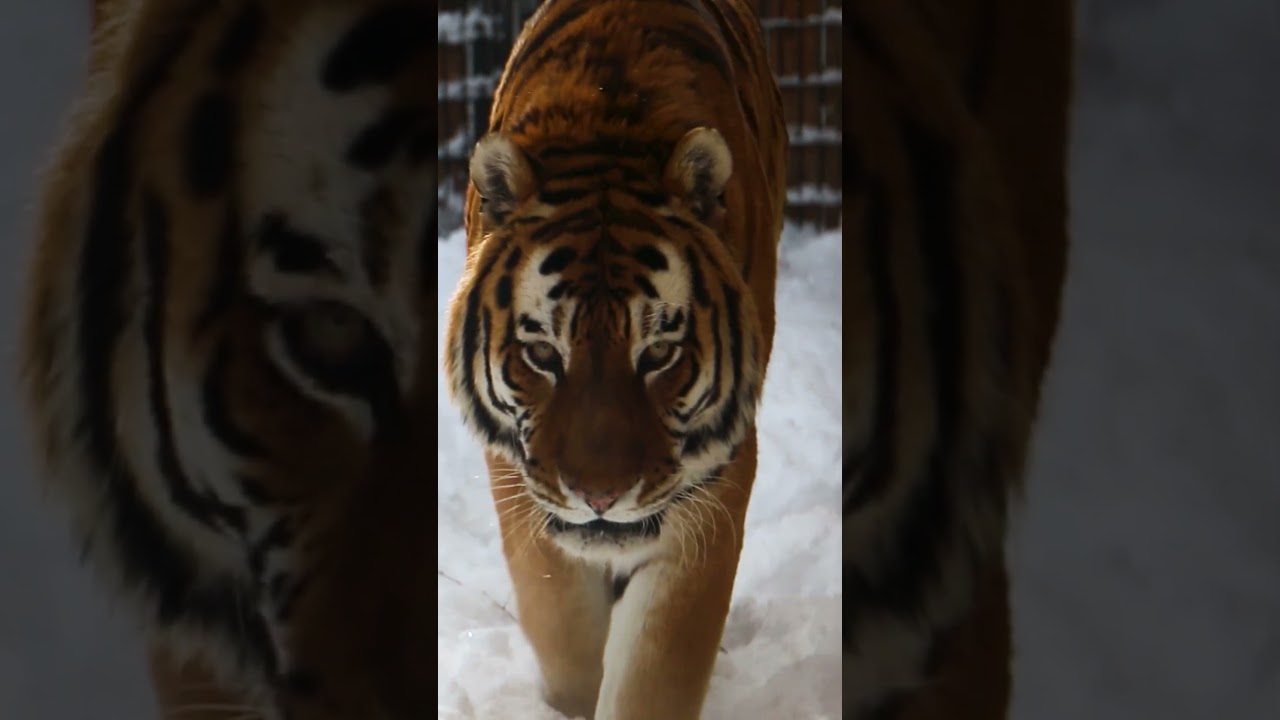– Discover how animals like Bronevik, accustomed to snow, thrive in winter conditions.
– Explore the role of specialized habitats in conservation efforts at places like Blank Park Zoo.
– Learn how to appreciate animals’ unique behaviors and adaptations in snowy environments.
Witnessing Bronevik’s Passion for Powder – Snow Days at Blank Park Zoo
When the season’s first snowflake gently descends from a gray winter sky, a transformation unfolds. For many, it’s a signal to huddle indoors and nestle under a cozy blanket. But this isn’t the case for everyone – or everything. At Blank Park Zoo, one particularly well-insulated resident embodies the idyllic wintry spirit that many humans might envy from their frost-fringed windows: Bronevik.
Unlike us, Bronevik doesn’t need to add an extra layer when the chill sets in. Snow, to creatures like Bronevik, is less an inconvenience and more a playground – a sprawling expanse of frosty white that comes but once a year. Each snowfall presents a fresh canvas for animal antics and behaviors hidden from the masses throughout the warmer months.
In this article, we’ll glide across the ice-packed surface of an often-overlooked aspect of animal husbandry and environmental adaptation. Grab your metaphorical snowshoes as we trek into the cold yet compelling world of winter-loving wildlife and the human efforts that aid their survival and prosperity.
**A Tailored World**
The role of modern zoos extends far beyond simple exhibitions. Institutions like Blank Park Zoo form the bedrock of education, conservation, and research. Vital work is underway as guests marvel at a polar bear‘s belly flop into icy waters beyond the splashes and photo snaps. Enclosures are specially designed to recreate natural habitats as accurately as possible, challenging the residents of these impressive establishments with environmental puzzles reminiscent of their wild homelands.
Consider the Broneviks of the world – beasts whose very essence is intertwined with the brisk kiss of winter winds. Their habitats are carefully chilled, often equipped with features like snow machines to ensure a steady supply of the frost they forage and frolic within. These measures aren’t just cosmetic. They’re deeply intertwined with the animal’s health and well-being, ensuring they exhibit natural behaviors essential to their physical and psychological health.
**Adaptations Abound**
Every animal has a toolkit for survival, a suite of built-in gadgets and gizmos fine-tuned over eons to face challenges head-on. For those like Bronevik, these adaptations are nothing short of fascinating.
Their coats aren’t just winter wear. They’re marvels of nature’s design – insulating layers and dense fibers trapping air to ward off the cold. Observe, and you may note smaller details: wide, padded feet acting as natural snowshoes or dark-tipped ears conserving heat where it’s most easily lost.
These adaptations aren’t merely physical; behavioral quirks play equally pivotal roles. Ingenious techniques for foraging, communicating through muffled snow, or the shifting social dynamics within a blanket of winter white reveal a sophistication that could rival any technologically advanced human society.
**The Snow Must Go On**
As climates change and seasons blur, the keepers of the world’s wildlife sanctuaries face increasing challenges mimicking these freezing conditions. Snow-loving species need winter to maintain their identity, instincts, and sanity. It’s a high-stakes game of meteorological mimicry played out for the highest cause: survival.
To step into a zoo is to witness this battle against the elements – to keep the cold alive, even as the planet warms. Here, among artificially induced snowstorms and chilled pools, one can glean an appreciation for the intimacy and intensity of humanity’s custodianship over nature.
**Seasonal Spectators**
In a sense, those who visit the zoos in these cooler climes become explorers themselves – braving the crisp air to witness a side of animal life often shrouded in the secrecy of distance and geography.
Children, cheeks rosy from the cold, press against the glass that separates them from a polar bear’s slow, deliberate stroke through icy water. Couples share warmth and wonder as snow leopards prowl with a stealth that belies their power. And there Bronevik stands, a testament to resilience, a creature both at the mercy of and in harmony with the cold.
It prompts us to reflect on our lives, adaptation, and perseverance. As we pull our coats tighter and turn our faces away from the biting wind, we’re not that different from Bronevik, seeking comfort and happiness against the odds nature presents.
**Conclusion: Embracing Winter’s Wildest Heart**
While the snowfall may dwindle and the temperature gauge may climb, the spirit of winter remains perpetual in places like Blank Park Zoo, courtesy of those who tirelessly work to keep the winter dream alive for Bronevik and many others.
The zoo is more than a place to gawk at exotic beasts. It’s a living library of life’s diversity, a testament to our planet’s richness, and a reminder of our solemn charge as stewards. The wintry wonder experienced by a creature like Bronevik isn’t just a seasonal novelty; it’s a narrative of survival, adaptation, and the delicate balance between the wild and the civilized.
When the snow finally melts and the cycles of seasons turn again, remember the joyous leap of those adapted to the cold, the quiet persistence of conservation efforts behind snowy displays, and the ingenuity of nature’s grand design. In them lies the charm of a picturesque winter’s day and the enduring legacy of life’s tenacious march against the elements.
*****
Source Description
Bronevik might be the only one still enjoying all this snow.


